Mustawd
Guest
That article about story mode was full of decline. What utter garbage.















The RPG Scrollbars: Final Fantasy And Me
Richard Cobbett on May 16th, 2016 at 1:30 pm.
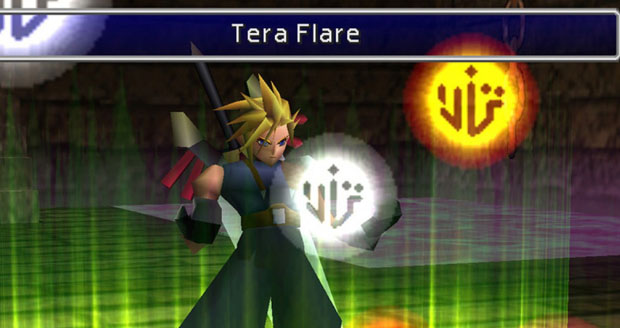
Since we’ve got a little bit of a gap in big RPG releases at the moment, I’ve spent the last couple of weeks playing catch-up. A couple of games I missed when they came out recently. One… quite a bit older. Final Fantasy IX was one of those games that slipped past me at the time, not because I wasn’t aware of it, but because I didn’t have a Playstation at the time, and by the time I bought a cheap PS2, a double-whammy of Final Fantasy X and X-2 made it tough to go back to the previous generation. Square’s recent rush of re-releases finally offered a good chance to catch-up. But I’m not really planning to talk about that specifically. Instead, I was pondering the sad fate of that most cursed of Final Fantasy fans… those of us who came to them on PC. Brrr.

I do think of myself as a Final Fantasy fan, though it’s nowhere near my love for, say, Ultima (take a shot) and I freely admit that my fond memories only really start with 6. Prior to that there wasn’t the degree of plot I needed to get past the bits of the JRPG genre that I’ve never much been a fan of, like random encounters and a love of grinding. Also, none of them in my opinion comes close to Chrono Trigger – another game I sorely wish I’d been able to play at the time. Surprising as it might seem, these games just weren’t released in Europe at the time. It was of course possible to mod your console and import them, but that wasn’t really on the table for a couple of reasons – there wasn’t a chance in Hell that my parents would have let me hand over my expensive SNES to some guy so they could do it, and I don’t remember JRPGs being all that prominent in my guide to the wonderful world of imported stuff, UK magazine Super Play. They tended to be more interested in the arcade stuff or anime.
I’m not saying they never covered Final Fantasy and Chrono Trigger, I’d be amazed if they didn’t, just that at the time neither of them particularly caught in my head. I wasn’t really aware of the series until Final Fantasy VII smashed through the world on its mako-powered hype-train, and even then, it was just another game on a console I didn’t have and wasn’t likely to at any point in the future. And indeed, never did. At that point, my mental image of the JRPG was, well, Zelda, mixed with a few others that I’d seen in passing like Faxanadu and Castlevania 2: Simon’s Quest, which wasn’t a JRPG, but still had something of the same mindspace. Seemed to, at least. At the time. The main thing I knew about the series was why it had such a strange name – because it was secretly a totally different game, Doki-Doki Panic, rebranded in a hurry to capitalise on Sega failing to run spellcheck when it released Phantasy Star and so leaving the word ‘Fantasy’ open for anyone to grab. Or something like that, anyway.
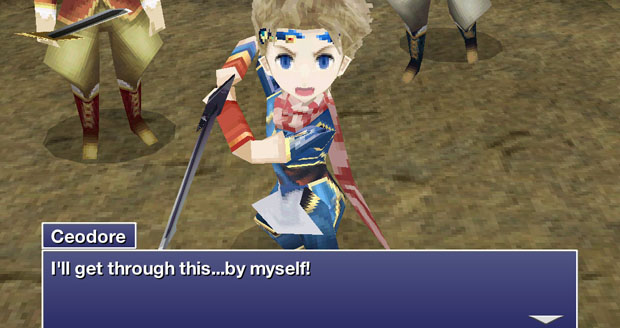
In short, yes, I am the absolute worst kind of Final Fantasy fan, who came to it only when it was cool, and who hasn’t played half of the games for more than a few minutes. I have also never played a single Dragon Quest game, but I have completed three different Pokemon journeys. To make matters worse, the first of them was Pokemon Yellow. So, yes. In JRPG, we’re looking at the job class ‘hipster’, at best.
But screw that. What I like about Final Fantasy and JRPGs that I have played in general still stands – how much I appreciate their general view that fantasy should actually be fantastical, rather than simply remixing the same few tropes like wizards and warriors. In many cases that does admittedly just mean mixing different tropes, but I’ll take that, and it’s still often JRPGs that will land a genuinely brilliant hit like the courtroom scene of Chrono Trigger, in which your actions in a seemingly innocuous setting earlier in the game suddenly take on a whole new level when used as a character trial, or just a premise like Final Fantasy X’s Sin – not so much the backstory as the basic concept of a beautiful world where death could hit at any time courtesy of an aquatic manifestation of mankind’s evils. (At least until you find out the truth behind the whole thing, which is much stupider, even for a game whose basic plot to that point can about be summed up as ‘find God and try to beat him up with a basketball’.)

After years of very straight-laced RPGs, Final Fantasy VII in particular was a revelation. I’d seen many a hero take up arms against an unstoppable evil. I don’t think I’d ever seen one don a dress and wig earned by doing squats in order to try and seduce a local gangster in a part of a futuristic/fantasy town where the houses sometimes decided they wanted a piece of you. In retrospect, I think the game’s mostly a bit of a mess – sorry – but that first playthrough was amazing. It had to be for me to continue, because Final Fantasy VII is the single worst port I have ever had the misfortune of playing. Whether it’s the ghastly MIDI music or the fact that it only actually loaded one time out of five, the whole thing felt like Square actively punishing PC owners for playing on the wrong system. Final Fantasy VIII wasn’t that much better, but at least the stability was upgraded from a one-legged clown trying to tightrope-walk over a chasm to a one-legged clown trying to tightrope-walk over a chasm with a tightrope.
The main problem with VII is that I knew most of what was going to happen long before it actually did. With VIII, which looked stunning at the time, I was able to go into the game and experience it at its own rate, without too many existing spoilers or expectations. Even with limited knowledge of JRPGs it was obvious that the story went to hell at the midpoint, but the whole experience still stands out as a very warm memory – the characters, yes, including Squall, especially after his speech on why he keeps himself to himself, the big dramatic sequences, plot elements actually affecting the characters, the split storyline between the main gang and flashbacks to the far cooler Laguna and pals in the past, and some interesting mechanics, like a late game boost to the difficulty by sprinkling far tougher monsters into the world after their release from an orbital prison. It had a coherency that Final Fantasy VII generally lacked, not least because that game’s obsession with throwing literally everything into the pot rarely seemed tempered by what the story actually needed… seriously, bloody Cait Sith… and a focus on character that we now take for granted in Western RPGs, but which hadn’t yet really bedded in. There’d be occasional examples of it, like the same year’s Planescape Torment, but they too still stood out as something special, or occasionally unusual enough for it to be seen as a problem. (I remember at least one Torment review for instance dinging it for not having as many NPCs as Baldur’s Gate, never mind their huge difference in complexity and narrative depth.)

Despite liking these games though, it wasn’t until reaching for a SNES emulator that I really began appreciating the series – Final Fantasy VI’s music alone made it a game I had to play, much like hearing the Zelda theme back in the day did more to create the image of a sprawling, epic world than even the SNES’ amazing graphics were able to create. Even now, it’s depressing that this is the only way to play them properly, thanks to Square’s terrible mobile ports (and subsequent PC ports) seeming to go out of their way to make them look crap. I’d love to see them port Chrono Trigger, but only if it was a 1-1 graphical port like the Nintendo DS version that finally let me play the thing to completion and realise that it is indeed as good as everyone claims. I can only imagine having had the chance to play it back when it came out. I’m surprised it didn’t start at least one world religion back in 1995. The First And Last Church Of Lavos, perhaps.
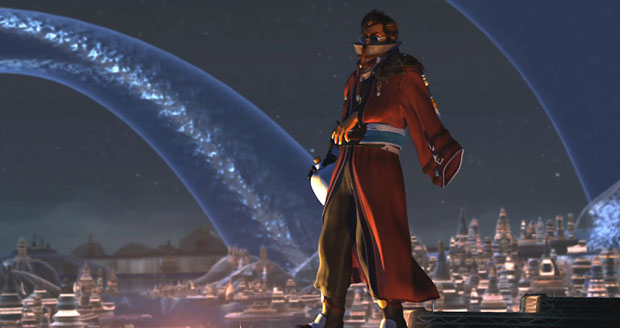
Aside from Chrono Trigger, obviously, I still hold FF6 as my favourite. The sheer variety of it. The mid-game twist. The mix of magic and technology that later games would double-down on, but often in the name of creating pretty looking but nonsensical stuff like FFX’s Blitzball arena instead of things that actually feel like they could fit and be part of a wider world. I actually liked Final Fantasy X a lot, ignoring the tedious temples and Seymour being one of the least convincing threats to the world ever… oh, that can-opener hair. The pilgrimage plot was perfectly suited for the genre’s linearity, and oh… the sheer joy of an RPG being set in the sun. Beaches! Beautiful oceans! I get so tiredof dark dungeons and miserable medieval worlds. Okay, so X-2 took things too far with its fan-service and story that revelled in its own pointlessness, but you know what? I’ll still take it. Even heroes need a holiday now and again. And a good laugh.
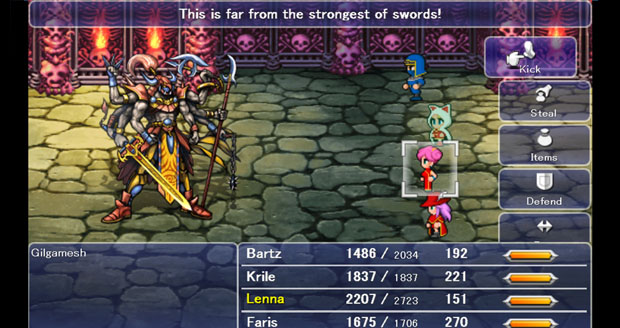
Unfortunately, the relationship with the series was pretty fleeting. Final Fantasy X was the last one I had a working Playstation for, and so I soon drifted away. I played the online only XI for a while, since that at least was on PC, but it sparked no new embers. Until writing this and thinking “Wait, what happened to XII?” I’d apparently missed that there even was one. It seems to be the most forgotten game this side of Leisure Suit Larry 4. And after that, well, we all know what happened after that. Final Fantasy XIII. The linearity. Lightning. The uninteresting worlds. Lightning. The final triumph of stories designed to fill 50 hours regardless of whether they’re worth 50 hours. Lightning. You may see something of a pattern here. But with XIV and reports of the new XV, I’m actually in the mood for the series again. As I’ve mentioned before, XIV is a surprisingly good MMO… second time around… not least because it’s one of the few that actually bothers teaching new players how to play MMOs. XV offers a more open world approach in a world fairly similar to Earth, give or take the monsters, and I really hope that Square’s current push to port the games means that we’ll see it without having to wait a decade for once. It actually looks exciting in a way the series hasn’t for quite a long time – in terms of tech and possibility, not just movie rendering quality.
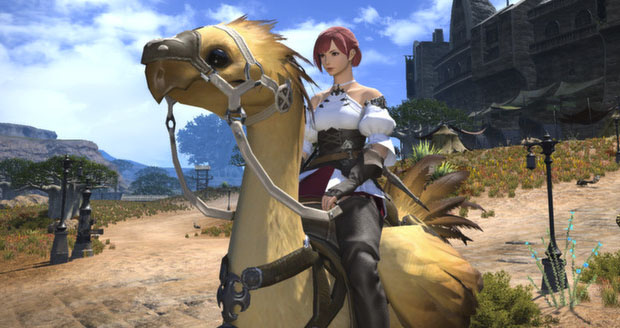
But, there are worse ways to wait than Final Fantasy IX. I doubt I’ll actually finish it, though it’s already pretty obvious why it’s a game people like but don’t generally bring up first in conversation compared to the more immediately impressive earlier Playstation games, but often go on to mention in a “But my favourite was always…” kind of way. Still, it’s been fun to finally sit down and fill in a missing chapter of the story while waiting for the next big adventure to hit, and good that Square has finally worked out that there is in fact a market for these games. Working copies, even. Now, if only more Japanese companies would take notice. There’s a whole beautiful world of JRPGs and adventures out there that either never made it across or never got their due back in the day, and this is the perfect time to dig them out of the archives and give them a quick polish, a new audience, and the now expected features to take the sting out of grinding and particularly painful bosses. Sure, there’s emulation, but if the last few years have shown anything, it’s that if something is available legitimately, people will pay for it. If we can play bloody Bubsy as penance for sins committed, we really should be able to play Chrono Trigger on demand. That’s games as a service for you, especially as I suspect Steam will be around quite a bit longer than the current incarnations of Nintendo’s Virtual Console.
Unless a meteor happens to be on the way to kill us, of course.
Just to be sure, better take good care of your local florist.

































The RPG Scrollbars: The Mys-Tree of Savior
Richard Cobbett on May 23rd, 2016 at 1:00 pm.
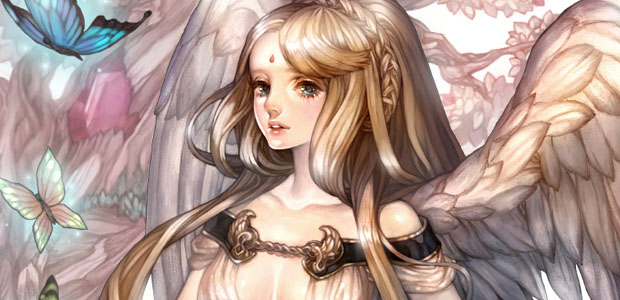
Steam Charts can be fascinating things. They’re usually pretty predictable. The latest big thing, except for Battleborn, apparently. A few sad spoors of games that never made it, like the site of Evolve’s player still looking for a new game or hope that it’s finally about to take off. Dota 2, because I’m pretty sure that there’s a prophecy that the world will end if it doesn’t have at least half a million active players.
And then just occasionally, something a little unexpected. Like Tree of Savior, as in either “What the hell is Tree of Savior?”, or to the tens of thousands of people playing at the time of writing this, “You know, the successor to Ragnarok Online.” Amusingly, it’s jockeying for position with Dark Souls 3 at the moment, and two more different genres it’s hard to imagine – the land of ‘git gud’ next to the realm of ‘git yur credit crd’.
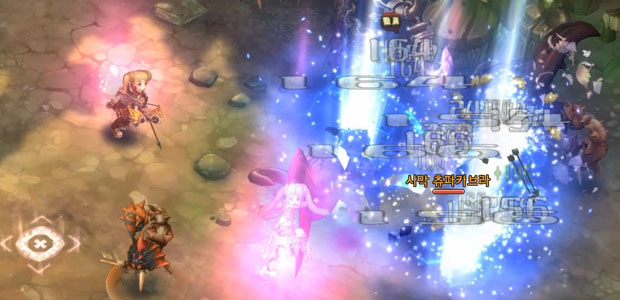
Korean MMOs stand as an interesting reminder that while most of the world plays games, the how and why can be very different. In Japan for instance, consoles very quickly took over the games market, with the PC largely relegated to porn. In Korea, the growth of heavily grind-driven RPGs rather than the more plot-based and pacey Western games is largely the result of them not being intended to be played at home, but at the ‘PC bangs’ – cybercafes, where players can buy time on a machine. Competitive games like Starcraft obviously took off as well, but the appeal of many of these RPGs is that sense of interactive wallpaper – something to click-click-click away at while chatting with friends or having a snack. Even with the trusty Skinner box set-up of the average MMO, that’s a pretty different set-up to sitting alone in an empty room, maybe while watching a documentary on the history of wool production in the 19th century. Or YouTubers explain in detail why they don’t want to see Ghostbusters.
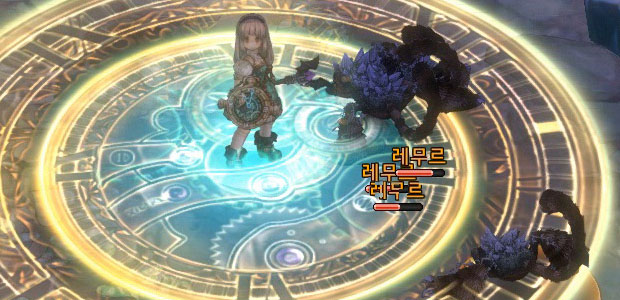
But times do change, and of late we’ve seen plenty of games try to offer something else. Black Desert Online for instance, with its dynamic questing systems, plot, parkour, resource management and more, all served up in what we apparently now have to call the buy-to-play model. Would Tree of Savior be a similarly interesting game out of nowhere, captivating the hearts and minds of the world with more than just the standard issue gorgeous graphics associated with Korean MMOs?
Well, it might, but it didn’t strike much of a chord with me. It’s more ARPG than most, with direct player-control and attacks. The first thing I noticed though wasn’t the lovely hand-drawn style, but the bar across the top of the screen selling all kinds of random crap. After that though, yes, the genuinely lovely art immediately kicked in. It’s a 3D game with 2D sprites, and an immediate sense of silliness if not comedy. A magical teacher casually called Alistair Crowley. Lots of new players running around with onions on their heads – sentient onions being one of the early enemies to whip like flies. Then when you talk to many of the main characters you get decently drawn close-up portraits that help fill you in on some of the subtleties of this world. Specifically, that it’s very big on corsets, and any children you see will be very well fed.
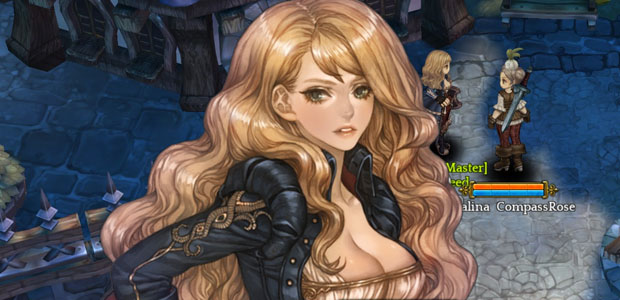
But you can see why it’s popular as a time-killer, even facing enemies who couldn’t hurt you if you gave them your weapon and a hundred free shots. It’s got that satisfying thump as sword hits monster, the jangling of gems being swept up afterwards, and a decent sense of pathing to the next bunch of monsters that need smacking. Where something like Grim Dawn works best when it’s cranked up to the tension of you versus impossible odds, this is the satisfaction of a dopamine drip. Early on, at least. Reading the forums it looks like it gets a lot more complicated later on, with custom character builds, a lot of gold sinks and players already trading (shudder) ‘git gud’s about the possibility of doing things like getting to Level 75, realising that you’ve ballsed everything up, and going back to the start to hopefully get it right this time. That’s not my idea of a particularly good time, though it is still arguably a better use of most player’s time than, say, learning Esperanto – the language that could have stopped at “Do you speak Esperanto?” “Yes!” and some kind of vocalised high-five.
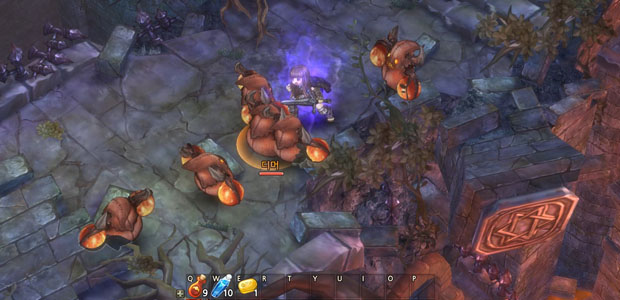
How long will Tree of Savior last in the charts? Tough to say, and the top slots tend not to move around that much. Just beating the likes of Rust and Stellaris and Doom on the Steam lists a pretty good start for any game though, even if ARK: Survival Evolved currently holds the MMO top-slot. Of course, Steam is just a tiny fraction of the audience for most F2P games (and not often a good one to look for, given how many it just handles the launcher for rather than the actual game). Tree of Saviour’s predecessor Ragnarok Online for instance boasted 25 million subscribers at its height, even if the definition of ‘subscriber’ wasn’t the same as Blizzard’s ‘people who are literally giving us £8 a month to play’, with free to play games often having total sign-up audiences clocking in over a hundred million. Some of them not even just bots programmed to spam gold trades in all the chat channels! (Presumably)
Anyway. While I can’t say that this one jumped out as one of those great surprises like Undertale or Final Fantasy XIV, it’s certainly built up something of a following. If you want to give it a try, it’s also free. Though very much the kind of free where you can see it holding a hand out later, for progress if not for direct benefit against other players, and with players already referring to ‘f2p scrubs’ and the like. Check it on Steam, and if you see any other interesting looking MMOs coming as if out of nowhere, holler. Even if ‘nowhere’ does technically mean a super-popular MMO that simply doesn’t get mentioned much around the likes of World of Warcraft and its Western ilk.















The RPG Scrollbars: Warcraft
Richard Cobbett on May 30th, 2016 at 3:15 pm.

The Warcraft movie hasn’t exactly been drowning in plaudits after its premiere… to which I wasn’t invited, so I’m typing this in a Frankie and Benny’s immediately after getting up early on Monday for the first non-midnight showing because hahahaha, no. That’s how devoted I am to timeliness. But, as a long-time player of World of Warcraftwho actually plays for stuff like the story and the PvE content, I still held out hope. If it simply wasn’t for others, as the mood seemed, might it be for me?
Answers as soon as I order this burger. Bacon, lettuce, no cheese…

So, I liked the movie. I liked the movie a lot. But I can see exactly why a lot of people didn’t, and it really is the dividing line between ‘good movie’ and, well, ‘movie I liked’. In addition to having played a lot of World of Warcraft, I’ve seen almost every game-to-movie conversion, and this one is light-years ahead of basically all of them for one simple reason – it wants to exist. Generally, movies based on games are ashamed of their source material and do their best to get away from it as fast as humanly possible. There’s a couple of exceptions, like Tomb Raider, Mortal Kombat and Silent Hill, to various degrees of success, but they’re dwarfed by how often someone walks away from the likes of Hitman apparently thinking “But what if he had a girlfriend?”
The Warcraft movie is made of love. It drips from every frame. Every background. Every piece of armour. Every little detail in every scene. This movie simply couldn’t have been made without that fastidious attention and drive to recreate this world to the absolute edge of what the budget can do. There’s a few tweaks here and there to lore, like Khadgar no longer being Medivh’s apprentice, and the orc who will be Thrall getting the full-on Moses treatment far earlier than originally. Overall though, they’re very small, don’t change the big picture much, and are visibly in the service of telling the story rather than just casually rewriting established lore for the hell of it.
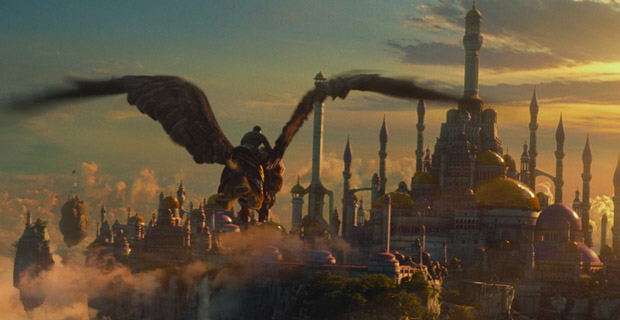
Most importantly, it finds a middle-ground between the two factions early on, with very little forced drama or frustrating misunderstandings to carry the story… occasionally to the point that it starts feeling unrealistic just how damn reasonable everybody is and that all of this is actually going to lead to great wars instead of just one big skirmish, a polite meeting, and maybe the parcelling out of a little bit of land somewhere. I hear Mount Hyjal is quite pleasant this time of year. The humans of Stormwind are peaceful, respectful, willing to hear anyone out, and capable of putting the blame where it belongs, even when flaring up in anger. On the orc-side, Durotan especially is shown as honourable to a fault, and the whole Horde torn between its old ideals and Gul’dan’s new wave of destructive Fel magic corrupting both their traditions and their future. Both sides though are treated as smart, worthy adversaries, whether it’s the humans working out tactics or the Frostwolves trying to handle warband politics.
Occasionally, they even get too smart for the movie itself, coming up with a plan so effective that the next scene has to quickly pretend that never happened. Doomhammer talking Gul’dan out of making the Frostwolves go green through Fel magic? Uh. Look over there! Did you see the flying monkey! Humiliating him in front of his army to turn all the orcs against him? Great plan! Hey, the flying monkey’s back! And he brought one of the movie’s suspiciously sharp edit-cuts with him!
But those are details. For the most part, this is a beautifully made, lovingly produced conversion. It’s one of the few that do its source material honour, it tells the story as the creators wrote it without being so stuck to the details that it can’t work as a film, while keeping things simple enough that, bar a bit of difficulty telling orcs apart at times, new audiences shouldn’t find it hard to follow.
So… uh… what went wrong?
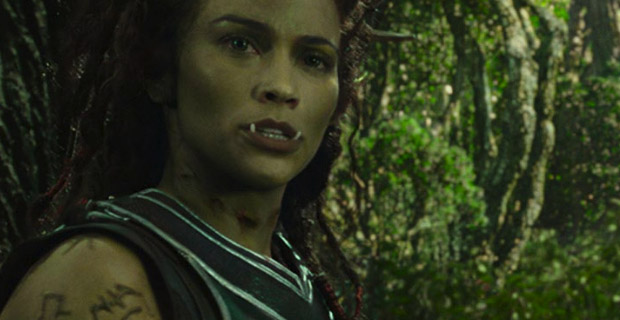
It’s tough to put my finger on it, but at heart… it’s not a fun movie. It’s so self-important,so po-faced, so desperate to be worthy. At times… and by god, do not mistake this for a comment on its quality… it made me think of the movie version of Battlefield Earth, and its quivering terror at being seen as ‘squirreling’ the original source. The Passion of the Christ would tell Warcraft: The Beginning to maybe chill out a little. Throw in a few more character scenes. Establish some proper chemistry in a bit of downtime,
But no. Everyone in this movie is there to be a dramatic puzzle piece first, a character second. With very few exceptions, Khadgar and Lothar ultimately working out what movie they’re in, there’s no sense of camaraderie, no humour, no banter. This might fit Warcraft, but let’s face it, this is a World of Warcraft movie, and the World of Warcraft is a fairly goofy place. I’m not saying that it should have been about an adventuring party cracking wise and cracking skulls, or god forbid, have had a comic relief character. But there’s a reason why comic relief is called ‘relief’, especially in a long movie. A few airships, a bit more friendship, perhaps taking the stick out of Dominic Cooper’s ass and making King Llane Wrynn be someone with the charisma to lead a doomed empire back from the brink of destruction might have made all the difference.
What makes it all the more noticeable is that as much as the movie deeply cares about depicting this first great battle between orcs and humans, it offers very little reason for the average viewer to. We see lots of Azeroth from establishing shots, but really nothing of the orc campaign up close. We’re given no sense of a great culture about to take it in the face for the next few years. Aside from one dwarf shown in the intro to set up a Chekhov’s gun (that, like a lot of what gets set up, never really fires) and the occasional shot of a Night Elf or whatever around a table, the entire of Azeroth is represented by basically five humans. Who cares? I’ve played this series since the 90s, and I was struggling to give a damn as everyone beamed around fighting an inherently losing battle with no care for establishing things like geography or scale.
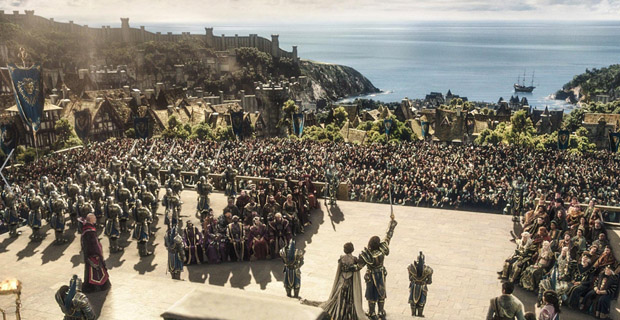
Instead, for much of it I was pondering how well Marvel has done at not simply making movies of its properties, but bringing people into its crazily complex world. In particular, Guardians of the Galaxy. Again, I’m not saying that should have been the template; that the movie needed wise-cracks and banter and so on. But what it did desperately need was that sense of friendship, of pushing against impossible odds, of presenting the Warcraft universe as not simply a place of deep lore, but a wonderous place where magic and adventure can happen. Or, alternatively, consider The Hobbit – a story that allows everyone to dip their toes into Middle Earth before diving into Lord of the Rings.
You need a connection to a world before you can truly care about it. Warcraft just assumes one, and while it gets the nature of the place very well, it’s too cold to give that familiarity any real emotional resonance. Seeing Stormwind on the big screen should be amazing. The Dark Portal. Ironforge. Karazhan. Westfall. And for a moment, in those establishing shots, it is. But then, we’re done. They’re just places; backgrounds rather than settings, and those narrative pieces pretending to be characters visibly composited on top rather than seeming to be living, breathing places. And they’re places that don’t appreciate the reason that they’re so beloved – the warmth of the Forge, the craziness of Karazhan, the beauty of Moonglade, and the memories and meaning that players have instilled into them over the years, rather than the story that Blizzard wrote for them back before anyone was allowed in to have a play.
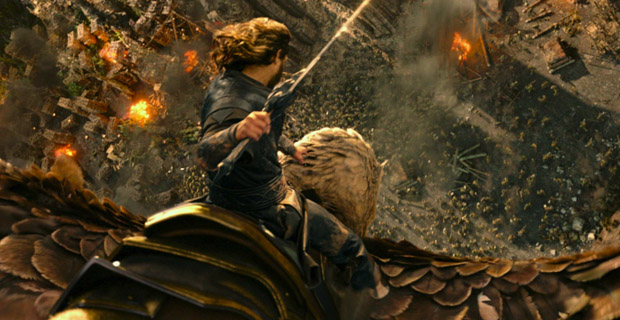
But again, for all its flaws, I don’t think it’s a bad movie. It’s a good movie, let down by its own desire to be a tribute to Warcraft first, a fun fantasy flick second. I really wish it had found a more personal story to focus on, that it had had the solid emotional tent-peg of an Arthas or a Thrall, where the big dilemmas could come from inside, and personal strengths/weaknesses rather than outright fantasy guff like Fel magic. The Beginning makes sense as the start of a new franchise, and it’s 80% the way to being the long awaited Truly Great Game To Movie Conversion. But if there’s to be only one Warcraft movie… and given its reception, that seems likely… it’s a shame it had to be this one. Still, it’s okay. Not great, but far from cinematic disaster, and for all its flaws, one of the best conversions yet. Don’t let anyone tell you differently.















The RPG Scrollbars: Breaking The Superhero Curse
Richard Cobbett on June 13th, 2016 at 1:00 pm.
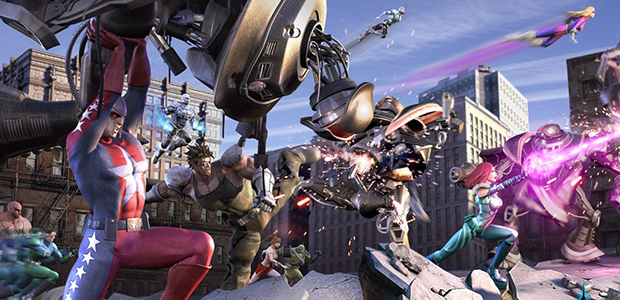
In this era of a hundred comic book movies a year plus spin-off shows, it’s getting harder and harder to remember that not so long ago trying to take a superhero off the printed page and onto some kind of screen was basically a recipe for failure, mockery, and a way of flying a promising creative career into a great big rock. Hell, even now most superheroes without the word ‘Bat’ in their name are still waiting for someone to even attempt a game, never mind make a good one. For every Batman on NES or Arkham Asylum, there’s an Aquaman or Superman on Nintendo 64.
On PC, it’s always been particularly weird. Especially when you look at which companies have tried and failed over the years to bring us the ultimate superhero RPG. Is there anything out there that comes close? Ignoring Freedom Force, since that’s not an RPG? Well, some! Enough not to have to hold out for a hero, at least.
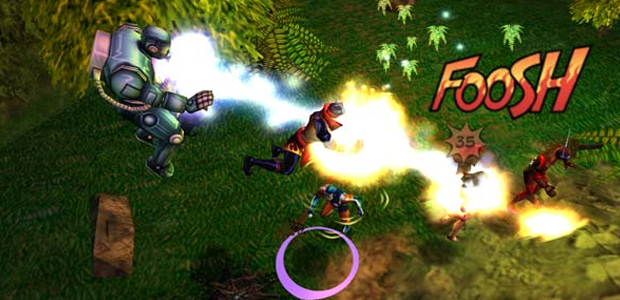
The turning point of course was City of Heroes (RIP), a game that I’m still incredibly fond of even years after its shutdown. It had its problems, not least the boring randomly-generated levels, but it understood both its genre and the appeal of it and created an MMO like no other at the time. The basic concept of being awesome from Level 1 was anathema to the genre at that point, with City of Heroes allowing you to leap buildings with a single bound, pick your power-set from a range of immediately impressive super abilities, and most importantly, provide a degree of contrast so that you still felt special in a world of special people. The whole world was full of civilian NPCs whose whole job was to go “Wow, you’re awesome!”, both generically, and calling back to specific missions that you’d been on. Having the game remember your last great battle against Dr. Vahzilok or whoever really helped hold the action together.
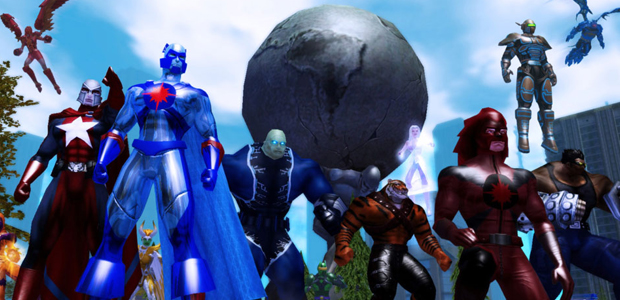
I won’t say I played City of Heroes constantly. I don’t think it was the kind of game most people did, even with its better than usual update schedule. I always liked knowing it was there though – that at any time I could dip in, beat up some evildoers, and just feel great. I was deeply sad when it shut down, and sadder still that its official follow-up Champions Online (originally intended to be Marvel Universe Online, before Marvel bailed) didn’t pick up the baton very well. I liked it for a month or so back at launch, and some of what it brought to the table – Foxbat, the Nemesis system where you created your own foe who would sometimes appear in the overworld for a rematch, some of the level design, and the far more flexible powers. It never quite had the same raw charm of being the protector of a specific city though, and its conversion to Free To Play wasn’t exactly in its favour. It’s still running, but a glance at its main page shows development is pretty flat. Lots of sales. Not much news.
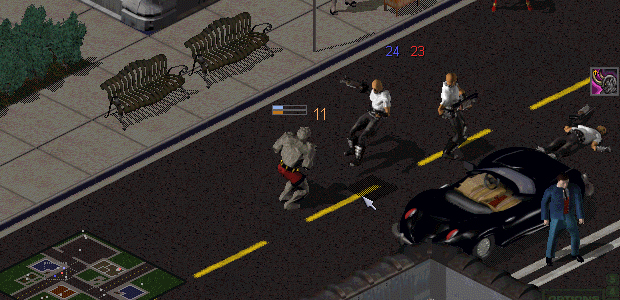
This isn’t the first attempt at bringing Champions to the screen though. Back in 1990, Hero Games formed a software company to create a game version. It would have customisable costumes! Episodic stories! Random encounters! Secret identities! A release date in 1992! Unfortunately, it proved too much for a team that had never made a game before, which isn’t too surprising given that far more experienced teams fell before this spandex-clad dream. Several of them.
Bullfrog for instance spent forever talking about a game called The Indestructibles, albeit without actually saying much. This was the same era as Creation, the underwater submarine game that never seemed to get much further than ‘Magic Carpet with a blue filter over the top’, despite endless diaries in PC Gamer. Indestructibles (originally MIST – My Incredible Superhero Team) was going to be an open-world action game full of collapsing buildings and throwing cars at things, and generally doing destruction that was far beyond what the technology of the time was probably capable of. Later in the 90s, Microprose attempted to throw its hat in the ring with Guardians: Agents Of Justice, which was planned to be X-Com with superheroes. Years later, Infogrames tried a slower, more Diablo styled take with Hero-X, which actually did come out, but nobody noticed because it was bloody awful. Fatman got more hype.
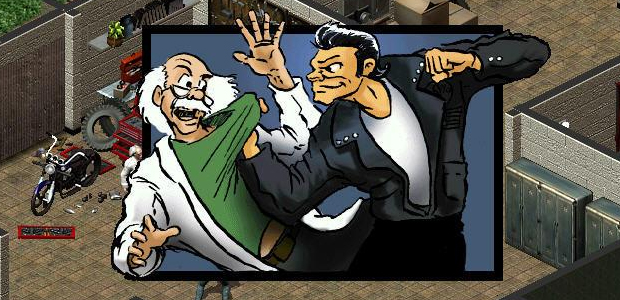
Really, until Freedom Force, the genre felt like a dead-end. If they were official licenses, they were usually shovelware. If they came out, they were probably out of left-field, like the dreadful Quake total conversion X-Men: Ravages Of Apocalypse, or shareware.Heroes: The Tantalizing Trio, anyone? It says a lot for the era that one of the most fondly remembered – and luckily for us, an RPG hybrid! – was the comedy game Superhero League Of Hoboken, a The Tick-style affair where heroes with names like The Crimson Tape and Tropical Oil Man (he fights villains with cholesterol!) fight to save their post-apocalyptic city from the evil Dr. Entropy. It was a fun game. Pretty silly, and the fighting got old fast, but it filled the gap pretty well.
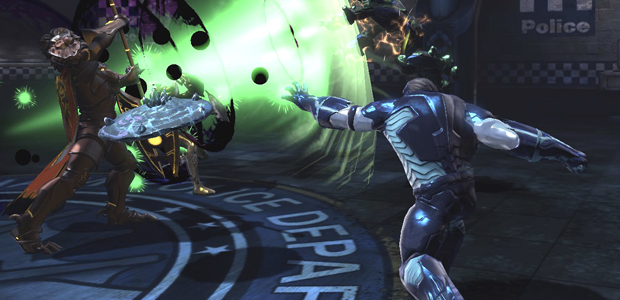
In any event, I was in the mood for some pummelling for justice over the weekend, so I decided to redownload DC Universe Online on a whim. I played it back at release, enjoyed it for a month, and then largely forgot about. It didn’t have great luck after that point, going free-to-play at a time when that felt like a defeat instead of the inevitable, and being bounced from Sony to third-party operator ProSiebenSat.1 and back again, but it’s been clicking along pretty nicely over the last couple of years. There’s now 24 episodes continuing on from the end of the base-game, heading out from its initial locations in Gotham (street crime, drug-dealing, etc) and Metropolis (robots, aliens, and the like) to places like Central City and Themyscira, and just about every DC hero and villain you could name showing up for at least a quick cameo, if not actual missions.
If you’ve not played it, I’d say it’s worth a try. It looks a bit plasticky but I’ll take that over the Murderverse of the recent films. The main levelling curve doesn’t bite too much, though the spectre of the cash shop hangs about as heavy as any game that went F2P at this point. There’s a lot of random grinding around and not many players to be seen, unless I’ve just been super unlucky there, but it goes out of its way to make you feel badass whether you’re playing alone or not. Every few missions throws you up against a big-name hero or villain, often with your own side lending support, with group content joined by solo missions and duo missions (for two, in case it wasn’t obvious). Also of interest is that just a couple of days ago the co-founder of Cryptic/co-creator of City of Heroes moved to Daybreak Austin – the DC Universe Online studio. How much that will bleed into the game remains to be seen of course.
For now though, it’s fun to play, though far more limited in terms of character creation than City of Heroes. It doesn’t help that almost all of its costume pieces are locked away in game, making it so much harder to create someone original looking, while committing you to a name with just those pieces. I’d like an ‘alter-ego’ type option that would let you go from being Robin to Nightwing at the appropriate part of your career, or at least something. Being able to share names wouldn’t hurt too, since it turns out that there aren’t that many cool names for heroes and they’re all taken.

Still, my only major problem with it as a raw game is that for all the effort it spends on being approachable – sleek missions, controller support, fast combat (which isn’t as big a deal now as it was, but it still holds up okay), easy traversal with your choice of skill and so on, it’s opaque even by MMO standards about what skills you should be pushing and how it defines the various powers and heroes you can base your style on. While everything also does damage, Fire for instance is classed as a tank power. Electricity? Healing. That’s at least mentioned in the character select screen, but there’s no way of previewing the skill trees or getting a practical idea of what you’ll be able todo with them. Citizens, bow before Vagueman – the man of steel and uncertainty!
There’s some twelve power sets plus weapons, plus Iconic Powers to juggle around. Just picking stuff you think will be cool or match your costume… suffice it to say, not a great tactical idea. I’d also still prefer more solo player content for the simple reason that many heroes choose to work alone, but… well, MMO.
But, does it do its job? I’d say so. It shows its age about as much as City of Heroes did by the end, despite being a far more modern game, but it’s still the best bet for either creating your own superhero, or entering a familiar world. After dropping its deal with Cryptic, Marvel went the other way – Marvel Heroes 2016 is an ARPG where you pick characters from a huge roster and take part in stories inspired by the movies. That’s cool, and as I said last week, I’m okay with that as an approach these days. With superhero stuff though, there’s still something to be said from being in full control. At the very least, if you’re going to look ridiculous in spandex and spikey metal things, it should at least be in a costume you can be proud of. As a game? It seems fine. I’ve not put much time into it, but it feels like a decent attempt to capture the mood of the films in a wider universe, even if that does mean oddities like Maria Hill telling Black Widow that she’s equally equipped to take on Ultron in a fist-fight as the Hulk. I’m pretty sure even the biggest Black Widow fan in the world would call BS on that.
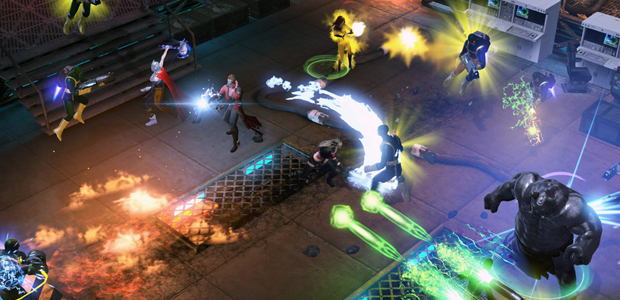
With both of these official games around, not to mention the Arkham series, with the exception of the bits of Arkham Knight spent parking Batman’s car, I think we can call the superhero curse officially broken. It would have been nice if it had been done in the 90s, but at least now both DC and Marvel fans have a satisfying way of playing in their favourite worlds, and there’s even a few indie options worth checking out. Looking for something a little more grounded? I’d say The Secret World is as much a superhero game as anything else, and especially worth checking out now that it’s been rebalanced for smoother levelling and less reliance on those pesky other players.
I still miss City of Heroes though. You never forget your first rooftop.















The RPG Scrollbars: Voices In Your Ear
Richard Cobbett on July 4th, 2016 at 1:00 pm.
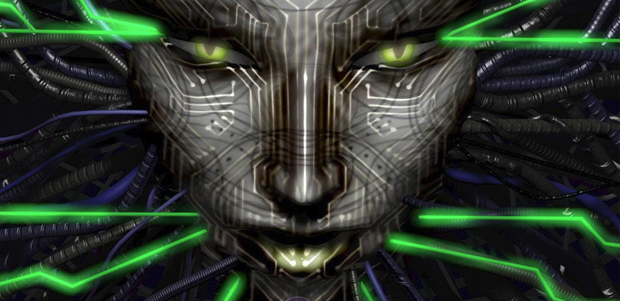
Looking back on System Shock, one part inevitably stands out more than any other. SHODAN. The goddess of Citadel Station. With her words she turned a futuristic maze into a horrific hunter/hunted situation, where survival was about clawing back control and beating the machine at her own game. It’s an impressive achievement… but especially when you consider that really, she was little more than a few well written voice files and a world that let them temporarily seem like something more.
Since the start of gaming though, there’s been technology… and there’s been showmanship. One often gets mistaken for the other. We see advanced AI in characters that simply broadcast what they’re doing. A simple line of dialogue at the right moment can make a game. In Deus Ex for instance, being shouted at for going into the ladies’ wasn’t simply a cute bit of scripting, but its way of saying that it was always watching. And you were never going to know what it was watching out for.
Sometimes, characters just commenting at all can create wonders.
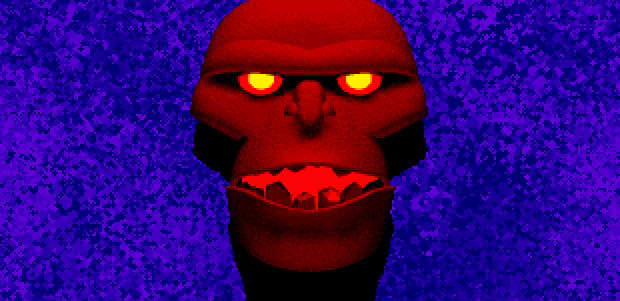
It’s hard to remember just how big of a deal speech was in the 80s and early 90s, back when most of us had a PC speaker capable of half-heartedly farting out a tune. A few companies, notably Access, managed to squeeze more out of it, including speech. Arcade machines too occasionally served up the odd soundbyte, at a price [of around $10,000 a word]. But computers didn’t talk much until the 90s. First they didn’t have the ability. Later, they lacked the storage space. While there were talkie games and CD-ROMs and SoundBlasters before it, it wasn’t really until ’95 or so that most PC gamers could be expected to have both. For ages, speech was largely a novelty.
Origin of course was well ahead of that curve, as befits the company whose motto was “Your PC Can’t Run This”. Their games shipped on floppy, but it was possible to buy “Speech Packs” to jazz them up a little. And I do mean a little. Wing Commander II for instance was restricted to in-cockpit comments. Ultima VIII: Pagan only gave voice to a handful of characters, like the Titans, and the kind of voice that pretty much answered the question ‘what does buyer’s remorse sound like?’
But Ultima VII… that was a different story. If you had a SoundBlaster, the quest took on a whole different atmosphere thanks to the villain, the Guardian, being able to break into your game at a whim. He could do it without sound, his big head being superimposed onto the screen with a caption, but that wasn’t half as effective as his gentle sentiment to “Sleep, Avatar…” when you went to bed, or finger-wagging “Thou shouldst not do that, Avatar!” when you inevitably pinched something. The use of speech turned him from a villain who honestly didn’t really do anything much into a focus for the entire quest. He wasn’t in some spooky castle. He was in your mind, slowly stripping away the pretence of having Britannia’s best interests at heart. Every time he spoke, his booming voice – the only voice in the game – was a mini jump-scare. Loud cacklings. False guidance. That smug sense of power; of being able to let you go about your business because failure isn’t even on the table.
The result was one of RPGdom’s most memorable, most intimidating, most active feeling villains, despite, as said, him not even having a presence in the world until the final five seconds of the game. And also of course, looking a bit like a poorly constructed Muppet. (Even Origin admitted it, via Easter Egg…)
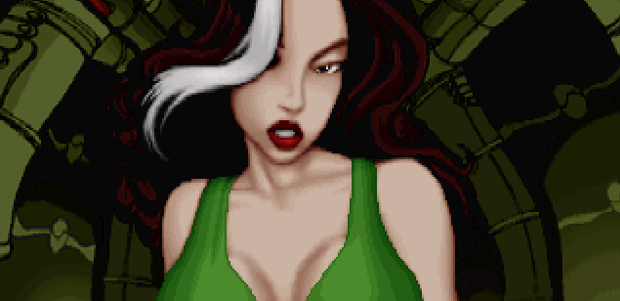
Fast forward only a couple of years. While I don’t know specifically if the Guardian was an influence on SHODAN, the fact that Warren Spector was on both games seems to make it likely. Certainly she uses much the same tricks – psychological ones as much as anything else. She doesn’t just threaten, because threats get old. She cajoles. She teases. She taunts. Above all else, she takes credit for everything that happens. The framework of Citadel Station, helped by already feeling like a coherent place where everything has a purpose, becomes her plaything.
Logically, you know that when you step into a room, all the walls fall down, and SHODAN declares “Welcome to my death machine,” that’s a trap by a human designer. In the moment though, it’s easy to imagine her having worked on this while you explored the previous level. It helps that, while it’s actually quite rare, System Shock is good at knowing when it’s time to show some degree of control, usually by having her think like a player. What would you do if you knew your enemy was going to arrive by lift? Send all of your people to mug them as they step onto the floor, of course. And so that’s what she does. Or if the player starts doing some real damage, bring in the heavy guns from another floor – the cyborg warriors and assassins who raise the stakes just as the player is feeling comfortable about slaying random zombie monsters.
The script of System Shock versus Shock: System Shock 2 (its full name according to the intro, making it official!) makes for interesting reading. For starters, it wasn’t really until then that SHODAN became fully developed as a character. In the original game for instance, she’s canonically male. Admittedly, for most players, that didn’t last too long. The gap between System Shock and the Enhanced CD version was only a couple of months, and it’s the CD version that’s been played the most. Most of her feminine traits however aren’t on display. By Shock 2 for instance, her model would have gone from a largely amorphous blob to a sharp-edged smirker with full lip and long wire hair, and her role as an evil mother figure/creation goddess more fully established – to the Many, as well as the player, who becomes an adopted agent to be groomed and enhanced.
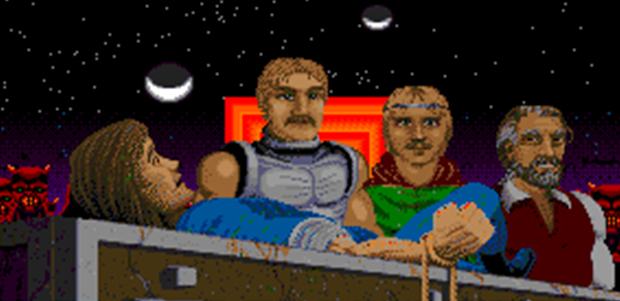
What both games do well though is to balance out her mad howling with a sense of odd vulnerability – used for very different purposes in each game. In Shock 1 for instance you start the game with her having no idea who you are. She’s simply curious, but not too worried. “When my cyborgs bring you to the electrified interrogation bench, I will have your secret and you will learn more about pain than you ever wanted to know.” As you play and begin to dismantle her empire from within however, the taunts and threats take on an increasingly desperate edge. Every defeat is a chip away at her self-belief that she’s a goddess, and the entire game is spent chip-chipping away at exactly that. One security camera at a time. One plan at a time. Ultimately, getting the upper hand and winning. The regular check-ins move from being intimidation, to confirmation that everything’s gone well. Her palpable, if unspoken, frustration becomes the best reward you can possibly get. You want to beat her to annoy her.
Something else that both SHODAN and the Guardian have in common though goes beyond their actual script. Their ability to talk is in itself a demonstration of their power. Nobody else in Ultima had ever had a voice, if we ignore the truly appalling FM Towns version of Ultima VI that pretty much nobody has ever played anyway. In System Shock, you can collect audio logs from the dead, but the only other characters able to directly phone you up are all routinely cut off and silenced as soon as SHODAN notices. “I prefer a quiet station, thank you,” she almost yawns, with every repeated conversation being conveyed as being hard work on the part of would-be helpers.
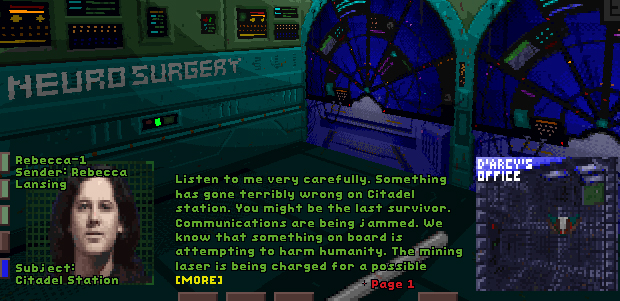
This is largely why System Shock and Ultima VII managed to live on as the defining examples of the style. The more characters capable of talking to you, the less pronounced the effect becomes and the more voice becomes, well, just what we expect characters to have. Someone butting in during, say, a Dragon Age game is just another character, or someone merely casting some kind of magic spell. Instead, voices in heads largely went the other direction, towards friendly Mission Control Voice type figures. Blackbird in Strife for instance. Red from Penumbra. All well and good, but not the same as a good old nemesis to build up a proper antagonistic relationship with. Even when the villains joined the party, as in Deus Ex or Bioshock, it took a real hook like the latter’s twist to get back into the spirit that their predecessors set up.
It’s really only now that we’ve seen characters able to top these early voices – GLaDOS for instance being funny rather than cacklingly megalomaniacal, or the Narrator in The Stanley Parable. Both offer definite debts to SHODAN especially, though dial down the mad ranting for comedy – ironically, resulting in the more horror-focused bits of both games being that much scarier as a result. Hurrah for contrast!
They do however prove that there’s life in the techniques that these games used so effectively way back in the day, which is all the more important with Shock 3 finally on the way. The awesome thing about now as opposed to then is that we finally have engines and designs capable of not just covering up the lack of real complexity, but pushing both sides to create worlds that feel responsive, and villains who seem to be doing the responding. While the Guardian’s era is over, SHODAN’s could be just beginning – with real schemes, world control, and far more than just empty threats.















The RPG Scrollbars: The Rise And Fall Of Audio Logs
Richard Cobbett on July 11th, 2016 at 1:00 pm.
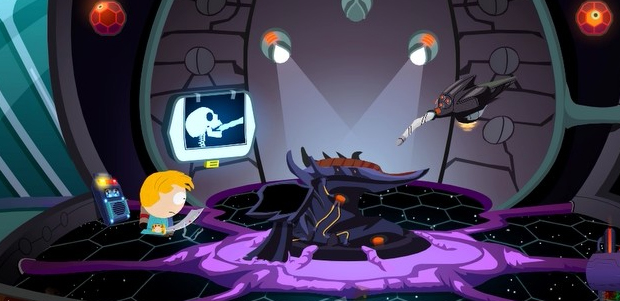
“Day 4. I’ve looked everywhere, but I can’t find anything to eat or a clue to get me off the ship. Just… more audiologs! They’re everywhere! For some reason I keep listening to every minute of every one thinking there’ll be some useful information but… they’re just filler! Filler that’s driving me to madness!” – South Park: The Stick Of Truth
It’s hard to argue. They’re kinda dumb. But I’m still fond of this stupid little trope.
The irony is that originally, the idea of audio logs was to increase immersion in worlds. Games had had notes and the like before, obviously, but System Shock pioneered the idea of scattering tapes around empty levels for you to listen to at will. It was a good fit. It allowed you to literally put the backstory on in the background while exploring, to tell the stories of characters you’d never meet, and to explain what had happened far better than any environmental storytelling at the time could or I’d argue still can. Vignettes can be awesome and many games set up cool shots like the aftermath of a Fallout poker game gone bad, but I argue that the most effective ones are linked to characters and backstories that you know. Here for instance is a shot that on its own is simply cute, but becomes heartbreaking when you know what’s behind it.
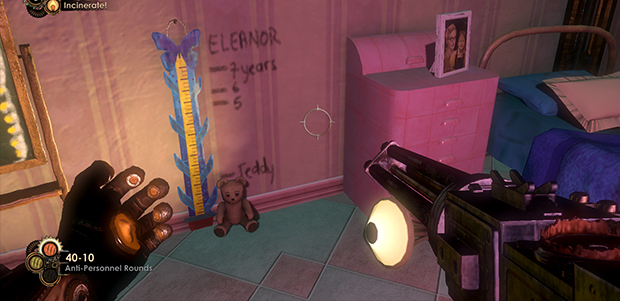
Like most techniques, there’s no need to go with just A or B. A physical vignette rewards exploration and contemplation, allowing you to build an image in your head of what happened in a more effective way than actually seeing it – especially in a violent game where blood and guts are a minute-by-minute thing. However, it tends to be more powerful still if there is a character to put with it, to add context, a sense of justice or unfairness, or something more than a faceless victim. The sense of hope dying in the dark. The last moments of comfort before the inevitable. The fate worse than death wearing a former lover’s face. The knowledge that a hero never arrived.
The pragmatic origin of Shock’s audio-logs too came from the right place. While the Ultima Underworld games had offered conversation, it was only by cutting away to a different interface that would have broken the mood. Unable to think of a good way of doing it, System Shock’s designers simply murdered about 99.9% of the cast and never let you meet any that temporarily remained. There were still living characters around, but either they died just before you met them (Parovski), or were physically separated from you by millions of miles (Lansing, Brocail) or villains (Diego, SHODAN).
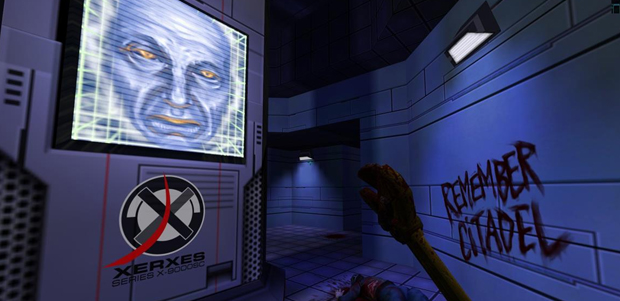
The problem is that the trick was so effective that it saw few big updates in the games that followed. System Shock 2 added ghosts and very occasional dying people to the mix, where sometimes you could see someone’s last moments as well as find it on a tape. Bioshock greatly improved the nature of the stories being told. But with every game that used the technique, the more awkward it became. Everything about it. When System Shock came out, everyone expected that by now we’d all be using videophones and the like, as opposed to even voice taking a back-seat to more efficient text-messaging. Even if you can accept that, the tapes being scattered everywhere is another obstacle. Why is that tender love story scattered over multiple floors of this ship/city where anyone could find it? Who would sit down and record their secrets like this? Like a lot of gameplay mechanics, it’s best not thought about, and lampshading problems rarely makes them go away. Mafia II for instance trying to jokingly justify main character Vito’s ludicrous recovery speed after being repeatedly shot. Computers in villain lairs that serve two purposes – to give out passwords, and have angry e-mails from the management about people leaving passwords up on their screen.
At this point, it’s kinda hard to take the whole thing seriously.
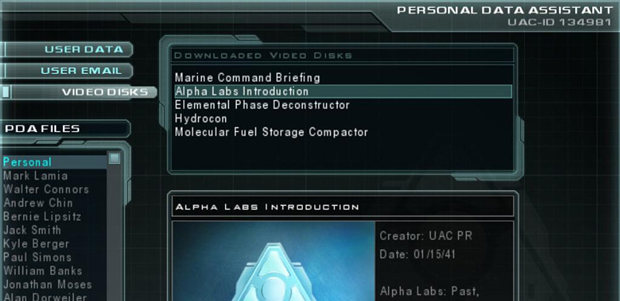
For my money, the death of audiologs came with Doom 3, which completely misunderstood their purpose and put them into a game that they didn’t fit at all. They worked in System Shock because it was a game where the quiet moments felt natural, rather than a distraction from the game. More pressingly, the logs in Doom 3 rarely actually said anything. You arrive before the invasion and so the majority of the stuff you find early on is just people complaining about things feeling a bit creepy and uncomfortable. No shit. You’re messing around with Hell. But they’re not even writing in an ironically creepy way, with far too many just dull, dull corporate reports that you only have to bother with because they’re probably going to have codes to locked doors in them somewhere. It was the design concept at its absolute worst, exposing the limits and revealing the artifice behind the gimmick.
After that, the only game that really drew any praise for using them was Bioshock and its sequel. These, as with some of the stuff in Shock 2, evolved the writing style in a fairly subtle way from System Shock. Compare the two games.
This morning Gunther was killed by one of the mutants. I have no time to dwell on the death of my husband, unless I want soon to join him. I think I understand now what SHODAN is doing. After destroying a bank of security cameras, the elevators almost came back on line. Somehow SHODAN must combine power from the CPU nodes with a constant input stream in order to maintain control over the station’s systems. If I can diminish the fiend’s “presence” here, I believe I can restore manual controls to the hospital level. Gunther, I’ll stop him, I swear.
That’s an early Shock log. Here’s a Bioshock one.
Another New Year’s, another night alone. I’m out, and you’re stuck in Hephaestus, working. Imagine my surprise. I just guess I’ll have another drink… here’s a toast to Diane McClintock, silliest girl in Rapture. Silly enough to fall in love with Andrew Ryan, silly enough to-
Back in Shock 1, the audio logs are literally diaries – an apocalypse log. They’re frequently intended to be read, heard, used. More technically, they’re diegetic. They actually exist in the world. What we get in Bioshock is something else. They’re snippets of conversation, they’re overheard gossip, they’re often taken straight from the character’s minds. The tape-recorders are more an icon than in-world artifact, and not something we’re meant to really think of in those terms. Fairly obviously. Few of them are willing to speak their mind while Ryan’s forces might be listening, never mind record their treasonous thoughts and leave them lying around. We collect them via audiologs, but it would make about as much sense as to say that we pick up a psychic echo or similar, in much the same way that we see the ghosts acting out scenes. (Another evolution borrowed from Shock 2, though neither game uses them that much.)
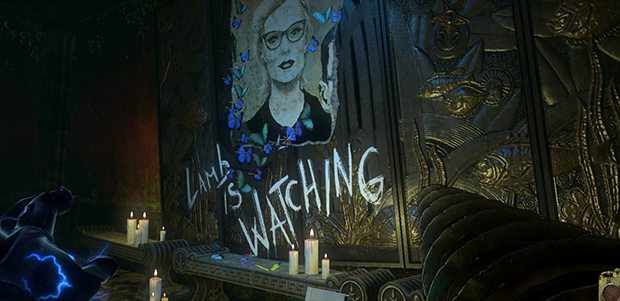
The use of ghosts does however highlight why the audiologs have stuck around. The idea of doing something more visual appeals, and it’s done okay in some games, like Everybody’s Gone To The Rapture – no relation. As a replacement in a more active game though they’re problematic, partly because of the extra time they take (say what you want about writing, but it’s cheap!), they can’t be easily replayed, they take away control of the player’s progression for something that’s often only ambient progression, they have to be in locations where the player can’t be disturbed, and they’re inherently hands-off. Bioshock 2 dropped ghosts entirely, though for a while it did continue the idea of ‘genetic memory’ by having playable flashbacks to Rapture in its prime. They were cut because they didn’t really work. (“What Rapture was like in its heyday appeals on paper, but it meant you really couldn’t play the game. Players sleepwalked through each scene, which was pretty, but not particularly convincing.”)

Bioshock 2 did advance the art in one way though, in a similar way to Deus Ex before it – putting more emphasis on ‘live’ characters. There were still audiologs to collect, but now far more of the plot was communicated through the case – Eleanor, able to jump into your head, villain Sofia, businessman Sinclair and the key members of the Rapture Family like Grace Holloway. Mechanically, their messages were no different from reading a log. The obvious difference is that as characters still with agency in the world, their ongoing stories were inherently tied to yours in a way that the audio-log leavers could never be. They could respond to your decisions, your evolving character, provide warnings, taunt, and as Deus Ex had demonstrated before it, give the illusion that things were happening in parts of the city that you weren’t personally in a position to see. It wasn’t entirely effective, and you really had to give the game the benefit of the doubt to think that the crazed splicers you encountered were part of a more civilised society when not shrieking and trying to beat you to death. But it was something. And with those messages doing much of carrying the main story and leaving the audiologs for backstory, it helped push them back where they needed to be.
Come Bioshock Infinite however, the trick wasn’t working so well. A big problem was that part of the reason we accepted audiologs previously was the acceptance that they were a means to an end. Games have plenty of them. Dialogue trees for instance. With Infinite though, having characters, having conversation, being able to show the world in all its glory, those audiologs became… well… ridiculous. At best – at best – they could be grandfathered in along with the new Plasmids (ignoring their shared origin, as revealed later on) as simply Something A Shock Game Is Expected To Have. At worst, they were a massive distraction from the action and a lingering sense of artificiality. The game already had so many methods to tell its stories, from conversations to tears to museums, it had outgrown them. Something which you can see it recognising simply in how few of them there are compared to the earlier Shock games – only about 80 compared to around 250 in Shock 2 and around 120 in Bioshock 1.
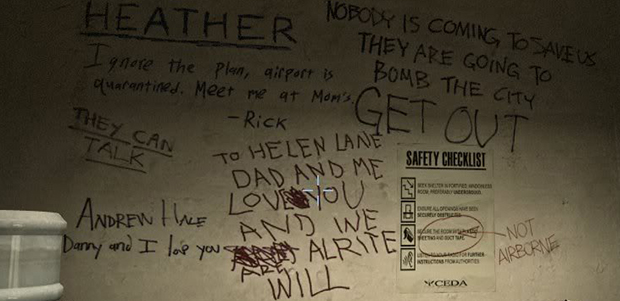
But does any of this mean that games shouldn’t use audio logs any more? I’d argue not. Like any technique, they can be used for good and ill. The problem with them is that they’ve been over-used; treated as the only way of conveying ambient narrative and setting up vignettes, even in situations where it wasn’t actually that practical. They worked in System Shock for very specific reasons, and when System Shock 3 comes out, I’ll be sad if it doesn’t do something similar to breathe life back into SHODAN’s victims. That said, it’s not enough to just scatter them around and party like it’s 1994. Maybe for instance there can be a twist to the formula where you snag chips from brains and then de-encrypt them, learning the story in a more non-linear order while interacting with the live characters. Different forms of notes, like the graffiti on the walls in Left 4 Dead 2’s safehouses being used to convey ongoing stories between familiar characters who you learn to differentiate via their handwriting and who they conduct conversations with in the dark, where SHODAN’s sensors can’t see. Tampered logs, leading you astray after so many games where dead men tell tales, but never porkies. Or overheard radio signals that you can’t tap into, painting a picture of the failed rebellion you’re about to walk into. Or many other extrapolations of the basic concept, either untried in a big game or yet to be fully tapped out.
Either way, new ideas were needed before South Park put a railway spike through the traditional form. Now, there’s no going back. We shouldn’t kill audio logs per se. As little chunks of narrative, they serve a noble purpose and nothing else quite serves it. But it’s not 1994 any more. It’s time for an upgrade, while people still bother listening.















I feel like every old-school PC gamer in the early ’00s made a wish upon an evil monkey paw that we wanted more Looking Glass type games, and now every AAA game is an unfocused mess of RPG mechanics, sloppy alternate stealth paths and audio logs that add nothing.








Tha warn't no audio log though, tha was a damn book.Best audio log were Moria wi'out a doubt, "Drums, drums in the deep, we cannot get out..." Shit not been matched or beaten yet.















The RPG Scrollbars: Adventures In Spaaaaaaace!
Richard Cobbett on August 15th, 2016 at 1:00 pm.
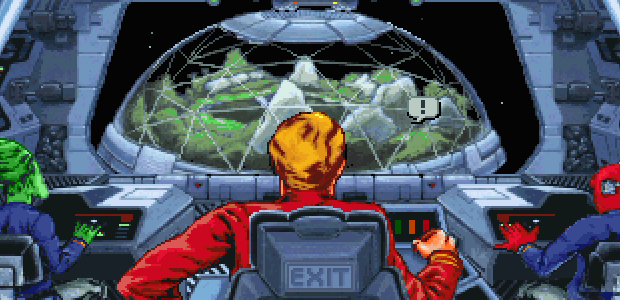
Today, a little bit of heresy. I’m going to talk about adventure games. Specifically, about a thing I’ve always loved in them, when they offer the chance – that sense of being given a ship and a universe to explore. I get a shiver when I look at the star-map. I feel proud of my usually low-resolution, 256-colour VGA vessel. And yet, jump genres to something like RPG or strategy and the moment is just gone. Why does No Man’s Sky, a game that actually supports that wanderlust, not give me anything close to the same thrill that something like Space Quest V still does, even knowing that Space Quest V is a) limited to a handful of worlds, each only a few screens in size, and b) makes your cool ship a garbage scow full of people who pretty much hate you?
I don’t know, but I love this screen. This, more than any Galaxy Map, is a screen that whispers “You can go anywhere. Do anything. The universe is yours…”
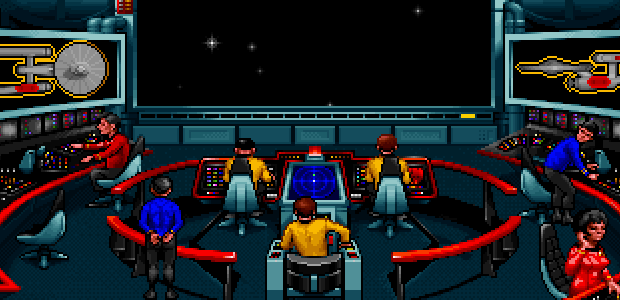
It’s a feel that I’ve always wanted to get from space RPGs, but which seldom actually happens. (Oh, do I have my fingers crossed for Mass Effect: Andromeda) That doesn’t mean I’ve not loved many of them, from Mass Effect to Captain Blood to Martian Dreams back in the day. Space is awesome. It’s just all too often Not The Same, and I think a lot of it comes down to how the various genres see it. To a game like Elite, having a ship is nothing special. Everyone has a ship. In an RPG, the ship is typically a collection of stats and crew first, a ship second. In an adventure though, there’s time to acknowledge what an awesome thing it would be. That feeling of taking control for the first time. Crew with personality. The knowledge that there isn’t just a universe out there, but a universe that’s been designed first and foremost for exploration, and hand-crafted to reward it with adventure and exploits rather than just maybe seeing something cool or finding a new way to earn some form of in-game spacebucks.
In short, yes, it’s the wrapping. But it’s wrapping rooted in drama and power and confidence that most other genres tend to drop the ball on. Dramatic music as the engines fire up. The whoosh of going to warp or hyperspace or whatever else gets folks from A to B. The knowledge that adventure awaits, but could be anything, from a deep space McDonalds to a deadly fembot on a license to kill. CRPGs tend to be more restrained because they’re not really in the mood for complex stories at every point of call. Either what’s on the other side is fairly generic, like a planet map, or it’s a quick storylet type encounter like FTL or Stellaris, or oddly commonly, it’s just known space and nobody on board is all that excited. To use Mass Effect as an example, most of the locations are homeworlds or colonies and the like and space travel is no big deal to any of the crew. In most of the best adventures that offer this kick – I’m thinking of things like Star Trek: 25th Anniversary, Space Quest, hell, even Adventures In The Galaxy Of Fantabulous Wonderment, there’s at least one character whose job is to be all “Holy shit! SPACE!” and set the tone for just how awesome it would be to be there.
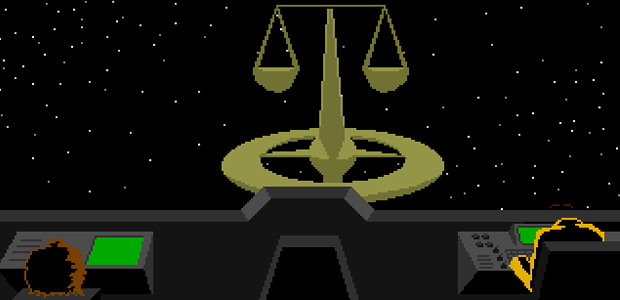
I’m obviously not saying other genres can’t do this. Hell, I’d hope that any Star Citizen player who’s bought into its whole ship ecosystem would be shivering like a naked mole rat in the Arctic at the sight of their ship in front of them and the stars above. I can name a couple of games in other genres that did it pretty well. I-War 2 for instance, where you start out as a kid desperately trying to scrape together money in a pirate filled galaxy. The original X, which handled the Farscape vibe better than any other game up to that point, where the sense of being lost in an alien galaxy was one of both terror and opportunity. (Cough, also hopefully see The Long Journey Home, cough, disclaimer: I’m the writer, cough). I haven’t played Artemis Bridge Simulator or the new Star Trek take on the same idea, but I’ll take on faith that those too offer some degree of it.
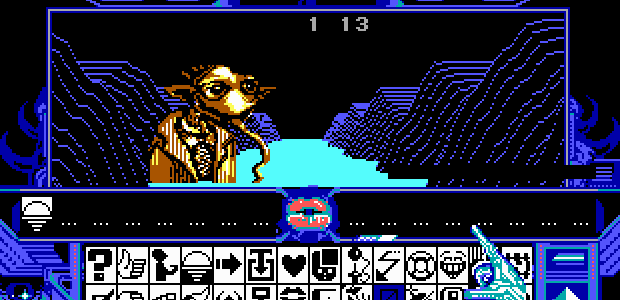
But again, for the whole kit and kaboodle, it’s adventures that set the tone that I keep going back to. Star Trek: 25th Anniversary for instance treats every mission as if it was an episode of the show, from the opening credits to the banter on the bridge at the end. There’s a bit of space combat, but most of the action takes place where space adventures should take place – on planets. In Star Trek Online meanwhile, it’s very obvious that all the development love (and certainly the player favour) went on the ship-to-ship combat elements instead. I remember being gutted to find this out, partly because I’d had high hopes for it, but mostly because I was really hoping that it’d offer a system that could be combined with user-generated content to actually fill the galaxy with awesome content to discover instead of simply choose from a menu – an MMO that could be played as a search for story and new content. Needless to say, that never ended up happening. Not even after the user generated content tools finally showed up.
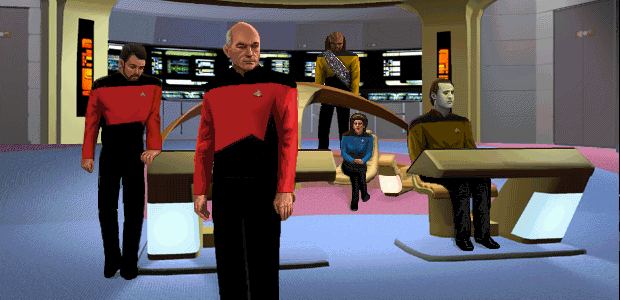
The reason of course that RPGs can’t typically do as well as adventures is… well, ironically, it’s space! One reason that adventure games do this kind of exploration so well is that historically, part of the artform was creating the illusion of a far bigger world than the player actually got. A big game would be around 60 rooms, but many managed to pull off the illusion of scale with far fewer. This for instance is Leisure Suit Larry 2, which crammed in Los Angeles, a cruise ship, two different islands, and its title screens into really not that many backgrounds. A big part of the trickery was making it convincing that you were only seeing a tiny slice of the world outside, which could be anything. Put the player in a space ship and it’s not that hard to limit access to locations while still pretending that they’re there. Space Quest III for instance focused on locations within travel distance, which just happened to be about three planets and a Monolith Burger. Space Quest V provided a huge starmap which served as copy protection, with the implicit message that you could go to all these places, but you simply don’t have time. But oh, if you could, what wonders you might see!
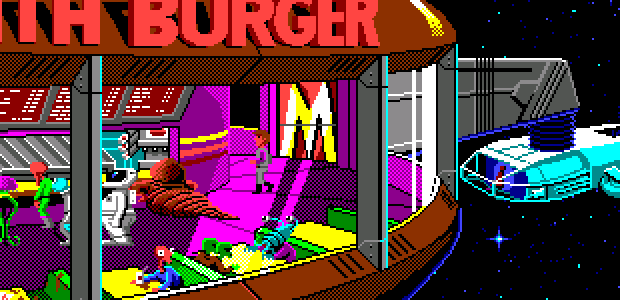
With RPGs, we expect to be able to go everywhere. Or at least, damn near everywhere within the provided space. On land it doesn’t really matter if it’s somewhere as small as Morrowind or as wide as Temeria. Given a sector of space to play in though – uh-oh. That’s a loooooooooooot of space that someone has to fill up. In the early days of games like Buck Rogers, you weren’t going to get the disk space for that. Now, the expectations of such content are so high that a few empty planets and bases for something like Mass Effect’s Mako are about all you can expect to find if you go off-book for a while. Top marks of course to those games that did manage to pull something else out of those limitations, including Starflight, Star Control 2, and now I think about it, the CYOA book Starship Traveller.
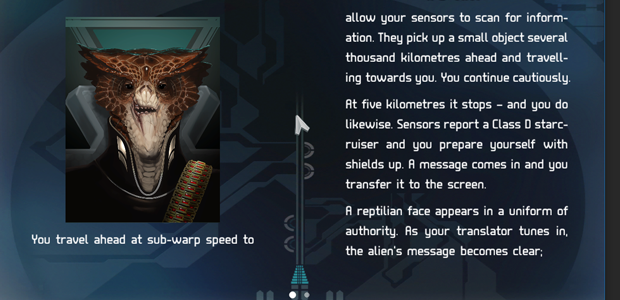
What’s interesting about right now though is pondering a few recent games that have dared to take on the size of space and try to fill it. FTL set things up quite well with its constant Encounters. No Man’s Sky at least attempts to jazz up its mostly empty worlds with unexpected plot bits and pieces, though for my taste the galactic heartbeat of those discoveries was stronger in its obvious inspiration, Out There. And as said, Stellaris is something of a dark horse, especially with news like former-Failbetterer Alexis Kennedy joining up to write some of its story chunks. Stellaris didn’t do all that much for me as a 4X game, but I really dug it as more of a Star Trek-style exploration system where I’d keep stumbling into interesting things while failing to conquer the place and researching completely the wrong thing. It’s not hard to imagine an RPG that borrows the glorious wrappings of adventure games past, while using simple text and graphics and even mod support to populate a universe with a universe of content.
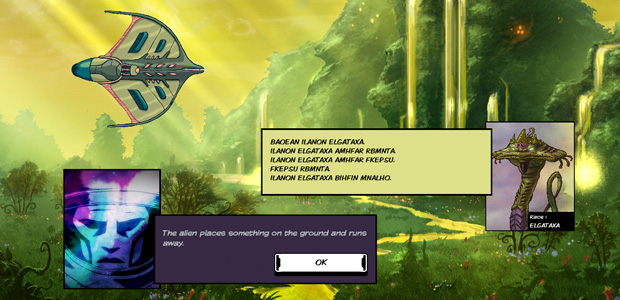
I hope so, anyway. Because the problem with the adventure games that have pulled off the trick of making the universe feel like a huge, thriving place full of possibilities is that it is, ultimately, exactly that. A trick. A feint. Bullshit, if you will. And no matter how well they’ve always pulled off it, at least part of the lingering excitement at the warp drive starting up and the crew exchanging a few sarcastic words about the mission ahead, is that sense that one day, the RPGs of the world would be able to pull off what they pretend for real. Perhaps now that space is finally cool again and the indie scene has shown that anything can be accepted with the right presentation, it’s finally time to break down that barrier and explore some of those penultimate frontiers.
Just as long as there’s something to actually do on the other side.


This morning Gunther was killed by one of the mutants. I have no time to dwell on the death of my husband, unless I want soon to join him. I think I understand now what SHODAN is doing. After destroying a bank of security cameras, the elevators almost came back on line. Somehow SHODAN must combine power from the CPU nodes with a constant input stream in order to maintain control over the station’s systems. If I can diminish the fiend’s “presence” here, I believe I can restore manual controls to the hospital level. Gunther, I’ll stop him, I swear.















Revisiting Deus Ex: Invisible War, one of PC gaming's biggest disappointments
As a new Deus Ex sequel arrives, we look back at the failed ambition of 2003's Deus Ex 2.
The Statue of Liberty doesn’t play a huge role in either Deus Ex or its sequel, but I’ve still come to think of it as the symbol of those games. It book-ends the series-as-was, prior to Human Revolution. The first mission of Deus Ex, the last mission of Invisible War. In the first game, it’s a symbol of ambition: one of the largest and most intricate game spaces designed up to that point, full of secrets and ways to chart your own path.
In Invisible War, it’s more a sign of submission, where the sequel’s many concessions to the original Xbox hardware are all on display. The inferior aesthetics that make every location look the same. The map split into chunks because the system can't keep it all in memory. The once natural choices now stated outright, blunt and simplified. Everything that the original map did so well, its return trip fails miserably to match. Such is the risk of following up one of the best games ever made.
Looking back all these years later, the question isn’t whether or not Invisible War was a better game than Deus Ex, because the answer is a flat no. It just isn’t. Coming second to one of the greatest games of all time would hardly be a shame, though. Now that the disappointment has faded, and a new incarnation of Deus Ex has gotten its own sequel, is it time to re-evaluate Invisible War for what it is, rather than what we hoped for 13 years ago?
It’d be great if the answer was yes, but replaying it now, Invisible War has aged about as poorly as a game can. Much of this is, again, the result of having been designed for the original Xbox, though the bland futuristic setting and inferior writing somehow make it feel like both the big budget sequel and cheap straight-to-video knock-off of the first game.
The 20XX files
Invisible War raises the stakes by going 20 years further into the future and tries to drive more of the story through characters and relationships, but it never quite manages to land the quantum leap or compensate for the issues those choices introduce. Invisible War’s hub areas are poorly conceived locations, tiny and bereft of detail. Easily the worst is the Cairo Arcology, home to the great and good, which feels like it’s modeled after an airport departures lounge and features an open recruiting booth for the Knights Templar. It’s explained that they’re simply advertising where the people they want to recruit are, but its conspicuous placement still feels a world away from Deus Ex’s gritty conspiracy theories.
The frustration is that Invisible War isn’t a lazy sequel by any stretch. It’s desperate to reinvent both itself and the series, and to find the next big leap. It tries so hard from the very first moment, an awesome intro that sees the entirety of Chicago wiped out by a nanite weapon. It goes out of its way to offer more choices on its main path than Deus Ex, with multiple factions to work for at any point instead of a forced transition from government yes-man to rebel agent.
This time, we’re not dealing with goodies and baddies, but distinct groups with their own agendas: the World Trade Organisation, religious group The Order, and the awkwardly named ApostleCorp, run by Deus Ex hero JC Denton. The missions only offer slight variants, like killing a scientist or stealing his gun, but it’s enough.
Invisible War tries, but its reinvention just doesn't work. It’s not all because of the technology, though that certainly doesn’t help. The missions are too short due to the tiny map sizes, and the world both too futuristic to resonate and too far beyond the engine’s capabilities to properly depict. Seattle, for instance, is a two-tiered city connected by an ‘inclinator’, but forget any picturesque views while travelling. It’s an interior location that, like much of the game, looks like a succession of slum and warehouses, slightly melted into metallic blue and grey.
Invisible War could be forgiven its technical shortcomings, but they're just the start of its problems. The deeper issues are rooted in its basic design. The faction system, for instance, spends most of the game bouncing between being comical and just plain broken.
Seattle looks like a succession of slum and warehouses, slightly melted into metallic blue and grey.
Wander into an apartment block, the Emerald Suites, and the head of the WTO—a complete stranger at this point—phones up to ask if you’d mind raiding the Minister of Culture’s bedroom. The intro starts with you under attack by the religious faction, nominally to ‘rescued’ from a fate as a test-subject for the not-particularly-scary Tarsus Academy, only instead the leader of the assault has decided to kill everybody. Yet despite this, the Order can’t get it into its head that, just maybe, you might hold something of a grudge. Instead, for the rest of the game, they’re constantly in your head as if you directly work for them.
This reaches a head in Cairo. If you choose to ignore the Order and choose to instead kill the plants in a greenhouse on behalf of the WTO, they actively send a couple of agents after you. Kill them, and the Order respond with, more or less “Now you see what happens to our enemies. Unrelated, got another assignment for you if you’re up for it. Hello? Hello?”
Imperceptible war
This isn’t just cherry-picking a couple of silly moments. The whole sweep of Invisible War is basically like this, with none of Deus Ex’s focus or sense of danger to pave over the silliness. Even the element of freedom is badly affected by the small levels and minimal payoff for taking different paths and approaches. The story is terrible, most characters completely forgettable despite its best efforts to give them depth. The ridiculous, apocalyptic scale of the endings goes far beyond anything that the game has earned up to that point.
Yet ironically, when Invisible War steps back from the big picture to sweat the small stuff, it’s often surprisingly effective. Its subplots are far better than anything in the main story: the mystery of AI helicopter pilot Eva, the way that each faction is represented and given an enthusiastic face by one of your fellow Tarsus students, or the feud between rival coffee shops Pequod’s and Queequeg’s, which turns out to be a mirror of the real global situation (false competition, with the Illuminati secretly owning and puppet-mastering both the WTO and the Order).
And yes, as everyone who played Invisible War has been waiting for, there’s the genius of NG Resonance. This virtual pop-star, knowledge broker and not-very-subtle government informant (played by the singer from the band Kidneythieves, whose music appears throughout) is easily one of the best inventions in the game, being a case where humanity and technology are allowed to combine to create something interesting. Sinister, yet friendly. Futuristic, yet approachable. It’s no wonder that when Invisible War is brought up, NG is almost inevitably the first fond memory.
The other futuristic changes proved more controversial. To its credit, Invisible War wasn’t afraid to change things up. Its biggest innovation though, universal ammo, really didn’t work. The idea is that rather than having dedicated bullet ammo and rocket ammo, you have an ammo pool. A bullet uses up a mere blip. A rocket uses up a ton. The idea was to expand on player freedom by ensuring that all their tools would be available at all times.
In theory, it’s a great idea. The catch is that it was so easy to waste your shots, especially not knowing when the next refill would be, that it often left you without any of them. Worse, even if you played carefully, it was impossible to play tactically without any real idea of when the next ammo stash would be. At least with conventional ammo you can be fairly sure that more bullets will be along soon, but it’s probably best not to waste a precious rocket.
Some people loved this system. Overall, though, the implementation was judged a failure, and not a model that future games opted to bring back for further exploration. It was, however, the kind of innovation that helped Invisible War’s reputation over the years as a game that at least attempted to break new ground and take Deus Ex forwards as a series, instead of just assuming its problems were solved. It certainly wasn’t a lazy, coughed-up sequel designed to make a quick buck, or one that lacked for talent behind the scenes.
Instead, it was the victim of technology that wasn’t ready, and a team that hadn’t quite grasped the spirit of Deus Ex—team leader Harvey Smith later confessed to having taken it too far out of the familiar, and relying on the advice of hardcore players and fellow designers about what was wrong with the original game, rather than leaning on players who loved the original to hear what it didright. (Smith would of course later more than make up for this with Dishonored, which despite being overtly mission based rather than offering a continuous Deus Ex style flow in sprawling social hubs, is as close to being a Deus Ex successor as anything that officially bears its name.)
The future, yesterday
And what of the other argument, that while it fails as a Deus Ex game, Invisible War is still a solid RPG on its own terms? Sadly, going back really doesn’t convey that. It’s not an awful game, but even if you forgive its technical faults (and it really doesn’t run that well even today), it’s a stodgy, lifeless, uncharismatic adventure. Invisible War got its reputation as a decent RPG because in 2003 and much of 2004, the demand “Well, show me a better Deus Ex style game” could only be answered with “Well, there isn’t one.”
This wasn’t, however, because there were inferior attempts, but because Deus Ex and Invisible War stood alone.
Today the most obvious comparison is Vampire: The Masquerade: Bloodlines, from less than a year later. It’s a game that holds up despite itself most of the time, and not even that at the end. As clunky as it is, Bloodlines’ setting, its characters, its choices and its general vibe help obscure the kinds of flaws that shine bright in Invisible War.
Much like fellow disappointing sequel Thief III (minus the Cradle and a couple of other good bits), Deus Ex: Invisible War is a game that sits in a bubble as the result of its time’s weaknesses rather than strengths. It’d be great to think of it as a lost classic, but even at its best, the kindest compliment is: “It tried.”
Not his RPS column, but Richard Cobbett wrote a piece on Deus Ex: Invisible War: http://www.pcgamer.com/revisiting-deus-ex-invisible-war-one-of-pc-gamings-biggest-disappointments/















The RPG Scrollbars: A Trip To Enderal
Richard Cobbett on August 22nd, 2016 at 1:00 pm.
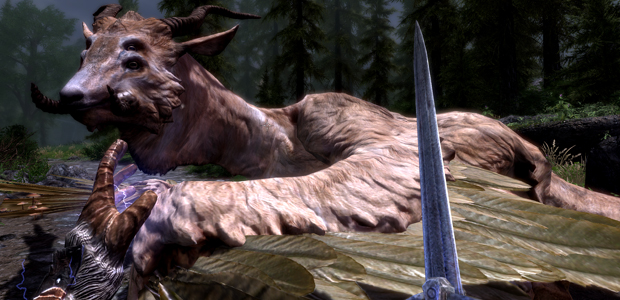
Even by RPG standards, Skyrim total conversion Enderal [official site] deserves some kind of prize for a depressing opening. A happy summer’s day twisting into a nightmare of dead family, fire and flesh. From there, starving aboard a ship with a friend, all in the hope of finding a new life across the sea. Discovery. Murder. Near drowning. Waking up to find that you have special magic powers… and almost as quickly that in Enderal, that’s pretty much the local equivalent of coming down with the clap. An illness to be treated, which will probably lead to insanity and an agonising death. Anything else, world?
On second thoughts, better not ask. Just play this excellent mod.
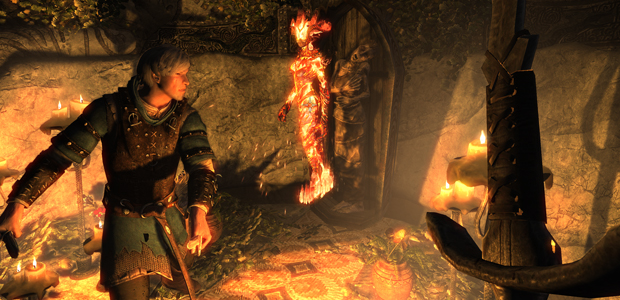
Has it really been five years since Skyrim came out? Firing up Enderal, it’s surprisingly tough to tell. It’s the total conversion that players have been waiting for – a complete new RPG in the Skyrim engine, and the follow-up to the popular Oblivion mod Nehrim: At Fate’s Edge. Shamefully, I never got around to playing that one for myself, but this one? This one I’ve been looking forward to for a while. Some fifteen hours in, I’m nowhere near done, but I don’t mind saying it’s the perfect reason to both pull your adventuring boots on, and give Skyrim back its hard drive space.
One of the most interesting things about mods is that they can be seen through two lenses – how close they are to their core game, and how they differ. Enderal feels like Skyrim. It uses Skyrim’s menus, Skyrim’s combat, and while it uses a different metaphor (stones rather than constellations) it uses a lot of Skyrim’s raw systems. At the same time though, play it like Skyrim and you’re going to find yourself eating dirt within quite short order. Much of its DNA comes from games like Gothic and The Witcher, and most of the systems are changed up in some way.
There’s no levelling-by-doing for instance, just by purchasing or discovering expensive spellbooks. If you want to rest to heal, you’ll need a bed, and not just to hit the Rest button and giggle that the Elder Scrolls universe has a day of the week called ‘Turdas’. There’s no level-scaling either. Be careful where you wander. As befits its German origins, Enderal feels far more European in style than American. Less forgiving, albeit not hardcore.
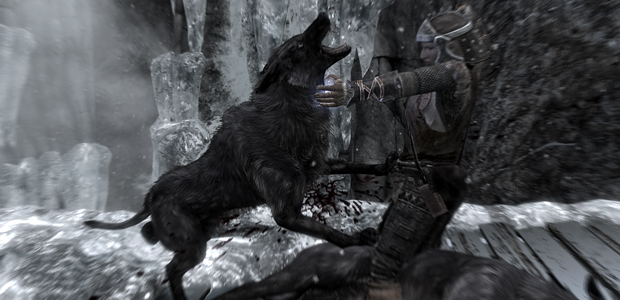
It’s in overall design philosophy that things really stand out though, for better and worse. I’ve been trying to put my finger on why Bethesda’s RPGs haven’t really done it for me in recent years, while the same basic game served up by the likes of Obsidian would go right to the top of my wishlist, and why The Witcher 3 had me hooked for over a hundred hours despite my barely making it to ten in Fallout 4.
There’s lots of specific reasons, sure, but increasingly it feels like… and this is just opinion, not fact… Bethesda aims for a consistent level of quality. Predictable. Safe. Consistent. A town is more or less a town, with maybe some fun quests in it, but nothing that’s going to stand out too much. Conversely, every area in something like The Witcher or New Vegas feels like its designated designers’ chances to shine – to show off, to make their mark. Graphed, the Bethesda model is a bit of a wibbly line with occasional bursts for something like the Dark Brotherhood or Skyrim’s Daedric quests, while the competition is peaks and troughs. In the first, you generally know what’s round the corner. In the second, it could be anything. Which isn’t to say that the second is automatically better. It’s much riskier, as you can pretty much guarantee that if one person really adores part of the game, someone else is going to bitterly hate it. It’s Newton’s First Law of Embuggerance, the bane of designers everywhere.
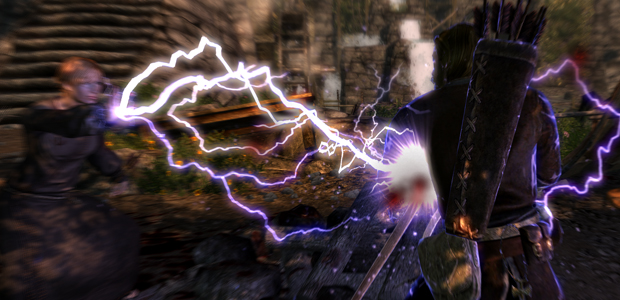
Playing Enderal offers a similar comparison, for better and worse. It’s a much more linear experience than Skyrim – though you can go wandering off if you like – and a much more controlled one. Much of the open world, for instance, is very obviously corridors, albeit lined with cliffs and trees rather than conventional walls, and the lack of levelling controls where you can go much more than anything in the base game ever did. As gorgeous as it all is, the old-school design peeps through quite often.
One good example of this comes early on, near the bottom of a ravine that you’re funnelled through on the way to the start of the quest proper. You meet a healer who helps out with your hero-flu (made worse by stumbling through magical areas or drinking potions), but your controls are locked off while his friend arrives. Then, you get a vision of bandits attacking… again, you’re unable to move. Then the bandits attack and you’re still stuck to your chair, because the plot needs you to get knocked on your ass and rescued by the first proper friendly NPC. Forget any clever choices, like trying to defend the guy or trying to join the bandits instead. Sit! Stay! Good hero!
For the most part though… and the big exceptions being early on… Enderal is worth the occasional frustrations that come of its own making and the ones inherited from Skyrim. It helps that it genuinely feels like a world in and of itself, and a very different one. While Skyrim wasn’t the cheeriest game in the world, Enderal can be quite depressing when its plot kicks off and you start working through its mysteries and realising just how bad things are. Still, at least it’s pretty! Not only does it make great artistic use of the Skyrim engine, not having to worry about consoles has led to a boost in system requirements to allow for better textures out of the gate, splendid draw distances on open areas, and absolutely glorious scenery to capitalise on how much a decent PC can do now as compared to the Dark Ages of 2011.
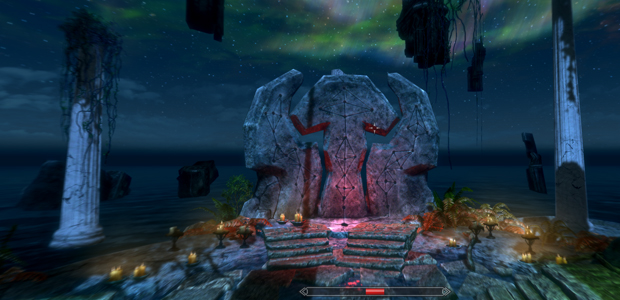
It’s still not as pretty as The Witcher III, but it is wonderfully detailed with both gorgeous stuff like multicolour grasses blowing in the wind, and less pleasant stuff like the near monochromatic cold areas of the map, and corpses hanging from trees. Even if exploring per se isn’t really the focus, the further you get, the more of it you can do, and it’s a pleasure to wander around this world and admire everything from the dungeon design and detailing to the vistas carefully arranged near every cliff. No expense has been spared, from the number of location types, to the collectibles on offer as you explore, to tiny environmental details in the buildings and caves.
Despite this being a German mod, Enderal also features a strong English language cast and translation. If you want to play Spot The Typo, you can, but that’s being mean. The voices vary, but overall are at least as good as those in Skyrim, and often a notch better. Certainly there’s nothing I’ve found so far that has jarred or gotten in the way as a result of translation or acting. Were it not for familiar Skyrim elements, from SkyUI to the re-used assets, it’d be easy to just consider Enderal an entirely brand new RPG. And it would still be one of the more enjoyable of the year.
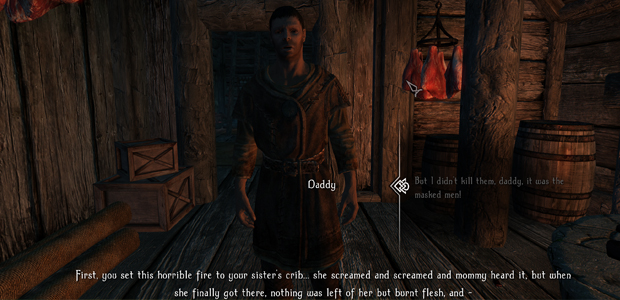
Enderal doesn’t reinvent the Skyrim style genre of questing by any stretch, and if you’re not a fan of Bethesda’s original, this probably won’t change your mind. It does however take regular advantage of being able to do whatever it wants for the story it wants to tell, filling in where Skyrim stumbled, while still stamping its own world and identity on top. If you don’t mind its tendency to take the controls or insist on a specific approach particular quests, it’s one of the best additions to Skyrim so far. Certainly, it kicks the living snot out of the official DLC that Bethesda yawned out for Skyrim before moving on. Seriously, all that potential, and what did we get? Hearthfire. Bloody Hearthfire.
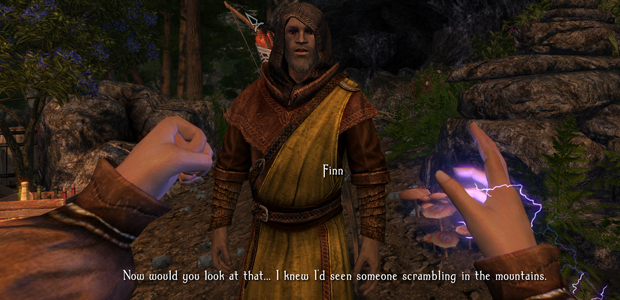
To download Enderal, head here. You’ll need the installation package, the launcher, and an installed copy of Skyrim – don’t worry, a base version will do. The installation will automatically backup the original game and any mods you have running, starting you out clean. A few mods are Enderal compatible, but check first. It’s about a 10GB download, with patches already available in the launcher. It runs pretty smoothly on my system, though I did hit a few bugs, including not being able to change screens in the character creator and the menus sticking off the bottom of my ultrawidescreen monitor. Overall though, it was fine. It’s worth keeping it up to date though because even more content is on its way very soon – a quest chain called The Golden Sickle, starring Dave Fennoy (Lee from The Walking Dead games), once it’s been debugged properly. There’s also plans for more, including a story pack later this year.
All of which is very cool, though the game itself isn’t exactly short on content as it is. Now that The Witcher 3 is over, we’ve got a bit of a gap before the next big fantasy game hits, and Enderal is a great way of bridging that gap with something fresh yet familiar, pretty yet complex, and with old school sensibilities but a reluctance to flay the skin from your bones and turn it into a grisly coat. If that’s not worth a download, I don’t know what is. WinZip, maybe. Useful program. But this is definitely more fun.
So... a Dragon Age 2 total conversion mod?Even by RPG standards, Skyrim total conversion Enderal [official site] deserves some kind of prize for a depressing opening. A happy summer’s day twisting into a nightmare of dead family, fire and flesh. From there, starving aboard a ship with a friend, all in the hope of finding a new life across the sea. Discovery. Murder. Near drowning. Waking up to find that you have special magic powers… and almost as quickly that in Enderal, that’s pretty much the local equivalent of coming down with the clap. An illness to be treated, which will probably lead to insanity and an agonising death. Anything else, world?






















